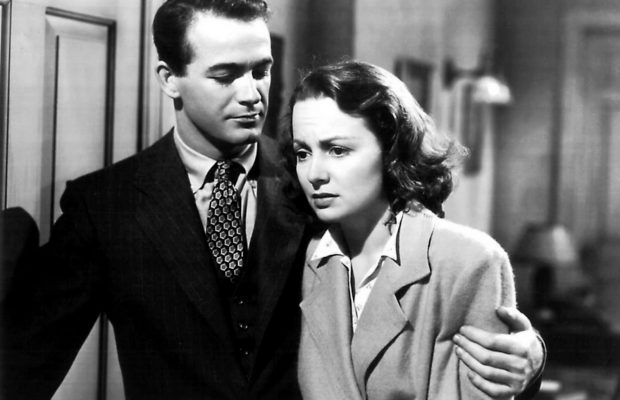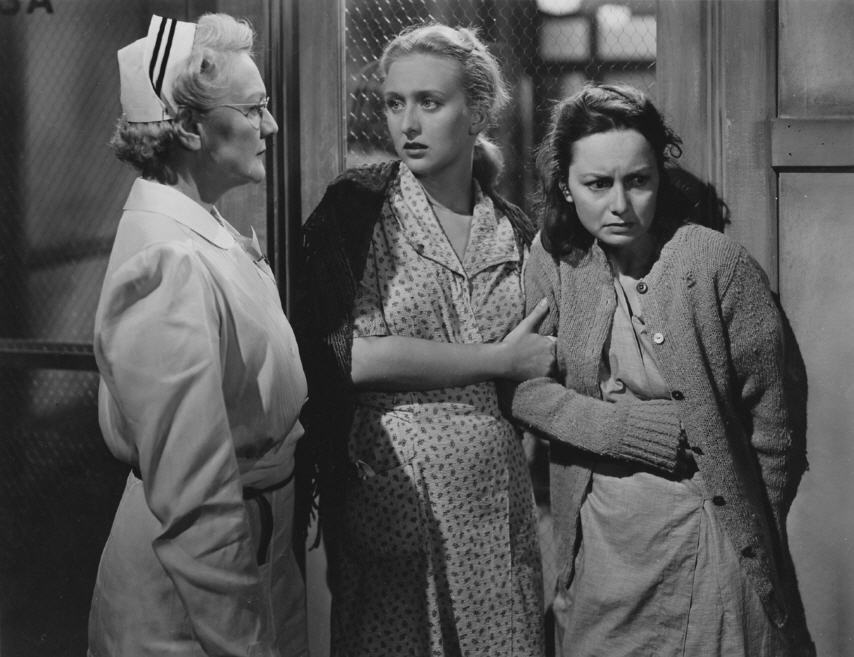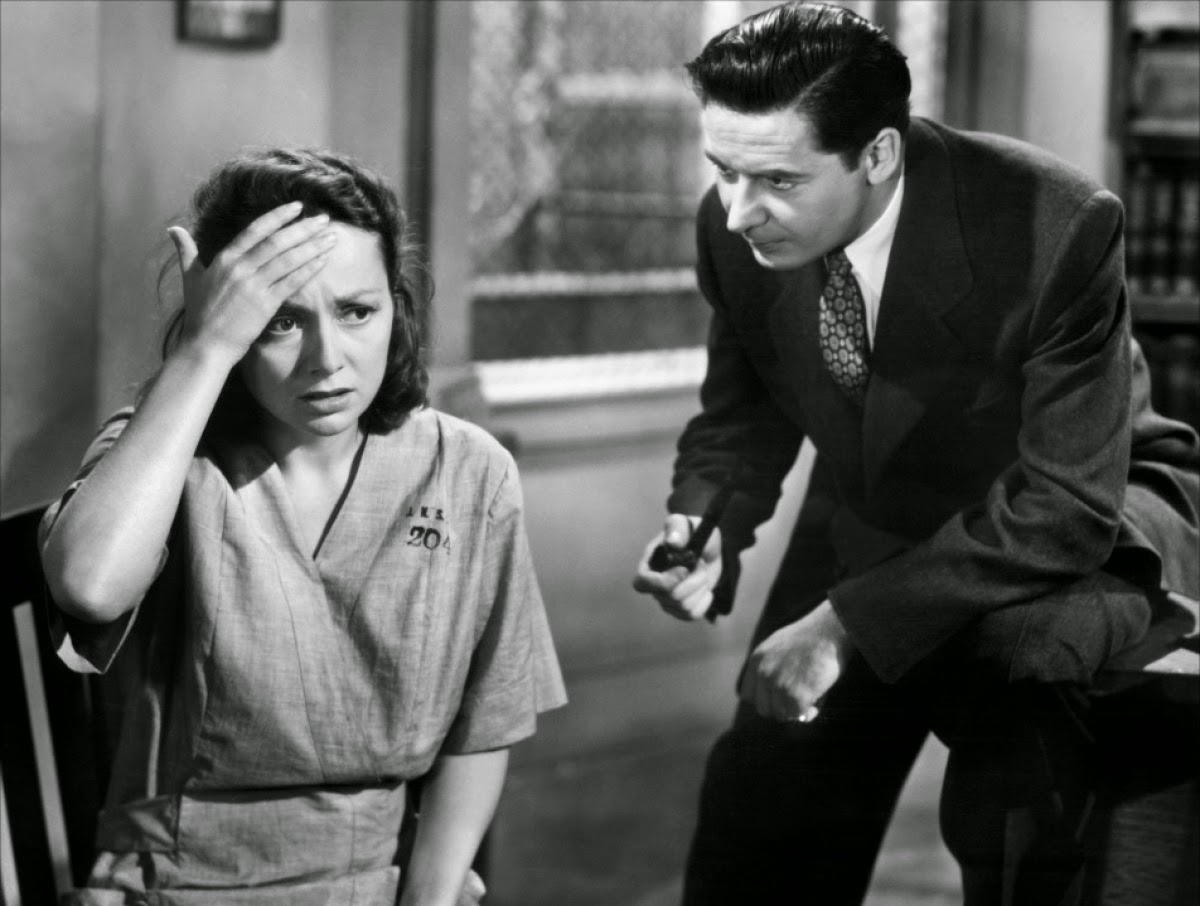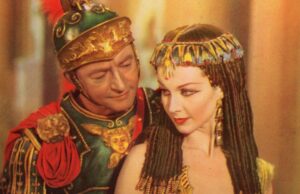The Snake Pit (1948)

Toronto Film Society presented The Snake Pit (1948) on Monday, January 17, 1983 in a double bill with Seven Days in May as part of the Season 35 Monday Evening Film Buffs Series “B”, Programme 5.
Production Company: Twentieth Century-Fox. Producers: Anatole Litvak and Robert Bassler. Director: Anatole Litvak. Screenplay: Frank Partos and Millen Brand, from the novel by Mary Jane Ward. Art Directors: Lyle Wheeler and Joseph C. Wright. Photography: Leo Tover. Editor: Dorothy Spencer. Music: Alfred Newman.
Cast: Olivia de Havilland (Virginia Cunningham), Mark Stevens (Robert Cunningham), Leo Genn (Dr. Kik), Celeste Holm (Grace), Glenn Langan (Dr. Terry), Helen Craig (Miss Davis), Leif Erickson (Gordon), Beulah Bondi (Mrs. Green), Lee Patrick (Asylum Inmate), Howard Freeman (Dr. Curtis), Natalie Schaefer (Mrs. Stuart), Ruth Donnelly (Ruth), Katherine Locke (Margaret), Frank Conroy (Dr. Gilbert), Minna Gombell (Miss Hart), June Storey, Lora Lee Michel, Damian O’Flynn, Ann Doran, Esther Somers, Jacqueline De Witt, Betsy Blair, Lela Bliss.

“This subject is dynamite,” said Bosley Crowther in his New York Times review. “Faint or susceptible people might find it extremely hard to take, and children not baffled by it might be terrifically disturbed.” The subject, of course, was the treatment of the mentally disturbed in inept mental institutions, and the film was Anatole Litvak’s much talked-about The Snake Pit, the third highest money-making film in North America during its years of general distribution (1949). The harrowing story of a well-educated middle-class woman confronted by her own astonishing and deep psychosis, The Snake Pit was bravely adapted from one of those novels that people of the time said never could be filmed. But filmed it was, in a way that earned the admiration of most of the critics of the period. They praised its faithfulness to the novel, the sensitivity of the director, and the general sense of responsibility that permeated the whole production.
Most of the praise, however, was lavished on the film’s star, Olivia de Havilland, who had been personally eager to play the role of Virginia Cunningham. Her performance ranges across the whole palette of histrionic nuances from delicate understatement to uncontrolled hysteria, quite deservedly copping the New York Critics’ Award for best actress of 1948. De Havilland had strong competition, for among the contenders was another famous Litvak-directed performance, Barbara Stanwyck’s in Sorry, Wrong Number. (It was a good year for Litvak in an uneven career.) Jane Wyman’s deaf-mute in Jean Negulesco’s Johnny Belinda won the year’s Oscar, but de Havilland would still have reason to crow six years later when her Snake Pit ordeal bested even her own Oscar-winning performance in The Heiress (1949) to receive the Laurel Award for the best performance by any actress in any film made from 1948 to 1953. Though nominated in a number of key categories (Best Picture, Director, Actress and Screenplay), The Snake Pit finally won only one Academy statuette–for sound recording.
There were some dissenters among the cheering critics. In response to the general commendation of the film’s “truthfulness,” Herman Weinberg, for instance, pointed to the over-simplification of a complex problem. The heroine, indeed, seems to be subjected in too orderly a fashion to every possible sort of grueling treatment short of lobotomy; one can wonder, too, at the husband’s lack of real suffering at his wife’s plight. Most particularly, the psychiatrist, Leo Genn (straight from the eternally depressing House of Atreus in Dudley Nichols’ Mourning Becomes Electra, 1947) is too much of a cliche, furnishing reassuring simplistic Freudian explanations while puffing on his pipe. This kind of psychiatrist, in the guise of Lew Ayres, had also treated de Havilland in The Dark Mirror (1946), and was still around in other guises a decade later, bringing to Joanne Woodward (The Three Faces of Eve, 1957), Eleanor Parker (Lizzie, 1957), and summarizing the case of hopeless Anthony Perkins in Psycho, 1960. The earnest predictability of this role makes one yearn for the satirized shrinks of earlier films like Bringing Up Baby (1938) or Fred Astaire’s role in Carefree (1938).

As for the other performers in the film, Fox quite clearly chose the supporting actresses for their genuine talents: from old reliables like Beulah Bondi to sincere younger players like Betsy Blair, who would later gain recognition as Marty’s girlfriend (Marty, 1955). The bland leading man, Mark Stevens, could provide no threat to de Havvilland’s tour de force. Nor even could the recently Oscared Celeste Holm. It is de Havilland’s film, and her performance is to be studied. There are few others like it on film.
Notes by Cam Tolton










Leave a Reply